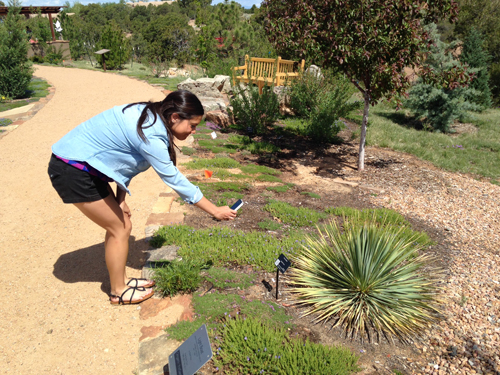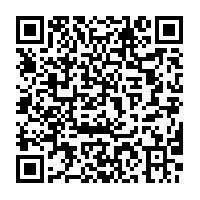Friday May 30, 2014
By: Meredith Yue
QR Codes are becoming a popular trend in the world of technology. They are a certain type of bar-code that gives information to the item in which it is attached. We have recently corresponded QR codes to a selection of plants in the garden. Getting information about plants will now be quick and easy! All of the QR codes are linked to the Santa Fe Botanical Garden database website for the specific plant. There you will find information about the plant such as; a short description, mature size, flower color and interesting facts!
In order to receive information about the plants all you need to do is download a free QR code reader app onto your smart phone.
Once the app is downloaded, simply open it and scan the bar-code found on the plant sign. It works best if you stand about a foot away from the sign. It may take a while to process the code and bring up the website. 
Not all of the codes are accessible from the path so there will be sheets with the codes and plants available in the kiosk!
 The following plants have QR Codes:
The following plants have QR Codes:
- Agave parryi
- Calylophus hartwegii
- Opuntia polycantha ‘Dark Knight’
- Echinocereus coccineus
- Echinocereus triglochidiatus
- Ephedra equisentina
- Eriogonum umbellatum
- Fallugia paradoxa
- Geranium cinereum ‘Ballerina’
- Geranium sanguineum ‘New Hampshire purple’
- Linum lewisii
- Opuntina aurea
- Opuntia rhodantha ‘Snowball’
- Penstemon strictus
- Cylindropuntia viridiflora
- Cylindropuntia echinocarpa
- Cylindropuntia whipplei ‘Snow Leopard’
- Thymus serpyllum ‘Pink Chintz’
- Prunus pumila var. besseyi
- Yucca rostrata
- Escobaria vivipara
- Aquilegia chrysantha
- Sedum kamtschaticum
- Cylindropuntia kleiniae
- Echinocereus viridiflorus
For more about the use of QR codes, visit this article on EcoPress >



